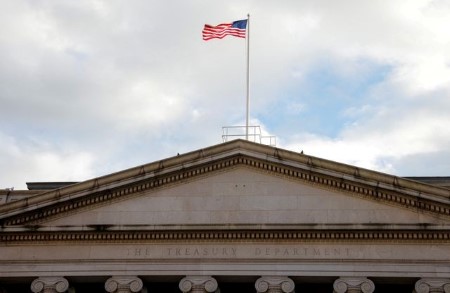




Monthly Economic Update: One for the road
 DOWNLOAD
DOWNLOAD

Inflation Update: Still low, still slow
 DOWNLOAD
DOWNLOAD

Philippines Trade Update: Exports momentum continues
 DOWNLOAD
DOWNLOAD


Yields fall as US prices rise modestly in June

Benchmark 10-year US Treasury yields fell to a one-week low on Friday after data showed that US prices rose modestly in June, offsetting concerns about a higher-than-expected uptick in inflation following hotter-than-expected price increases for the second quarter on Thursday.
The personal consumption expenditures (PCE) price index nudged up 0.1% last month after being unchanged in May. The core PCE price index rose 0.2% last month, following an unrevised 0.1% gain in May.
Economists polled by Reuters had forecast both monthly headline PCE and core inflation rising 0.1% in June. Some economists increased their estimate, however, after data on Thursday showed core prices rising by 2.9% in the second quarter, above economists’ expectations for a 2.7% gain.
“The upside surprise angst that was instilled based on the quarterly data yesterday was to some extent overpriced, so that’s why I think that we had the relief rally,” said Vail Hartman, interest rate strategist at BMO Capital Markets in New York.
Thursday’s data also showed the US economy growing at a 2.8% annualized rate in the second quarter, double the first quarter’s 1.4% pace.
Interest rate sensitive two-year note yields were last down 5.4 basis points at 4.389%. They reached 4.34% on Thursday, the lowest since Feb. 2, before rebounding on the growth and inflation data for the second quarter.
Benchmark 10-year note yields fell 5.6 basis points to 4.2% and got as low as 4.19%, the lowest since July 19.
The closely watched yield curve between two-year and 10-year notes was at minus 19 basis points, after reaching minus 11 basis points on Thursday, the smallest inversion since October.
An inversion in this part of the yield curve is seen as a precursor to a recession, though the length of the current inversion is longer than in previous episodes. It has been negative since July 2022 and typically turns positive before an economic downturn sets in.
Attention will now turn to the Federal Reserve’s July 30-31 meeting. Traders see only a very slight chance of a rate cut next week but will watch for clues that a September reduction is coming, as is widely expected as inflation eases closer to the Fed’s 2% annual target.
Hartman noted that Friday’s data brings the three-month annualized rate for core PCE down to a year-to-date low of 2.3%, “so the more recent trend is building upon the market’s confidence that we are on a trajectory that would get us to 2% over the long run.”
Traders are also pricing in a second and possible third Fed rate cut by year-end.
The government’s employment report for July next Friday is the next major economic focus that will help guide Fed expectations.
The Treasury Department will also release its funding plans for the coming two quarters and is expected to say that it will keep most of its auction sizes unchanged for now.
(Reporting By Karen Brettell; Editing by Sharon Singleton and Emelia Sithole-Matarise)
This article originally appeared on reuters.com





 By Reuters
By Reuters